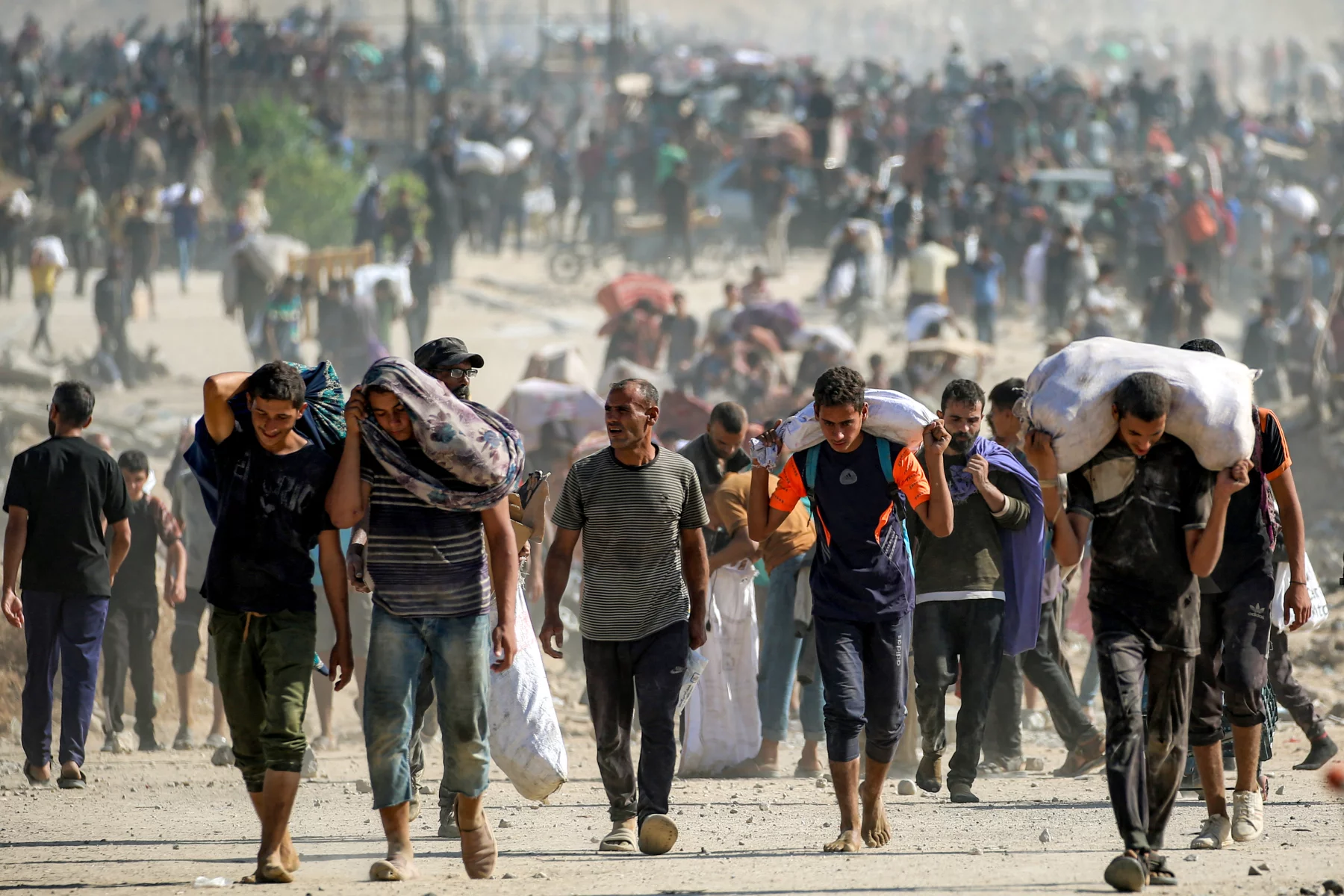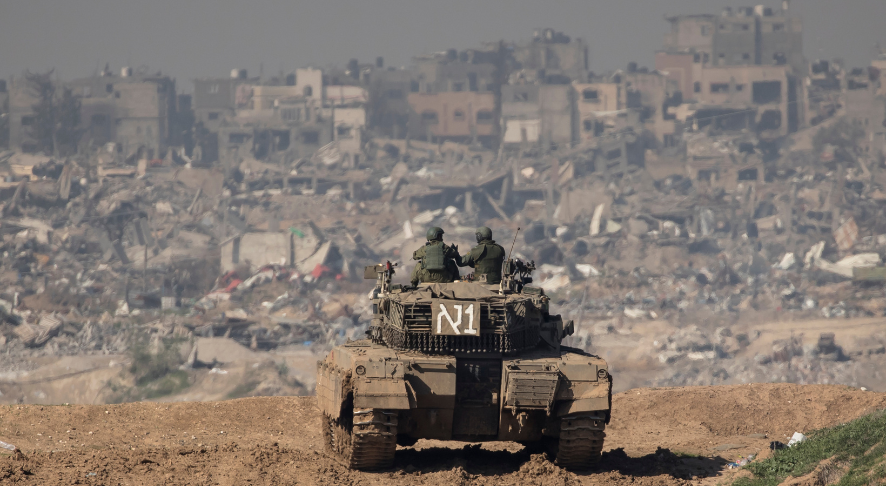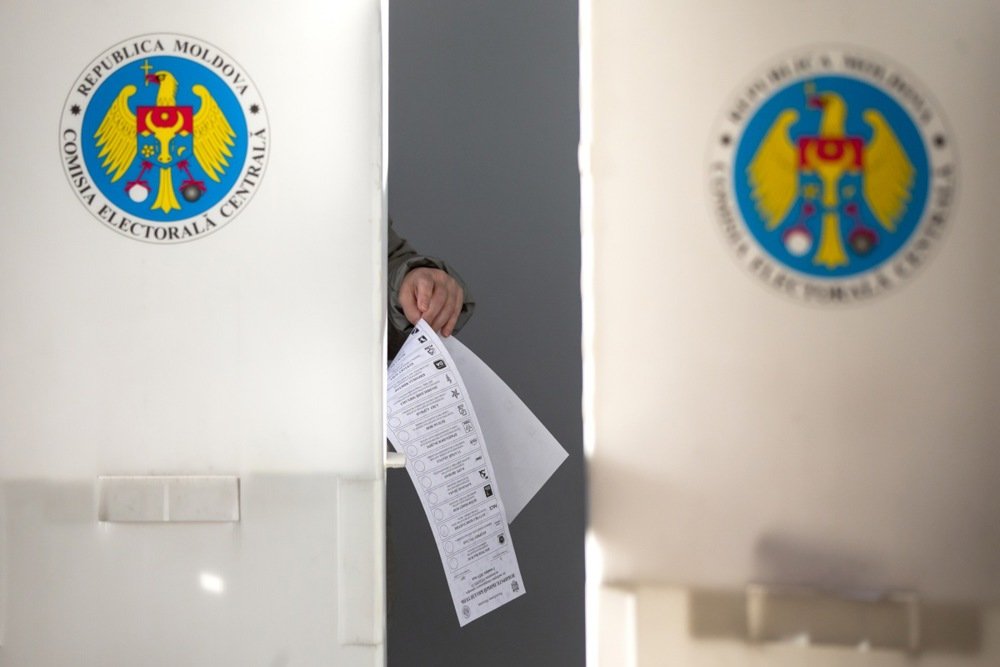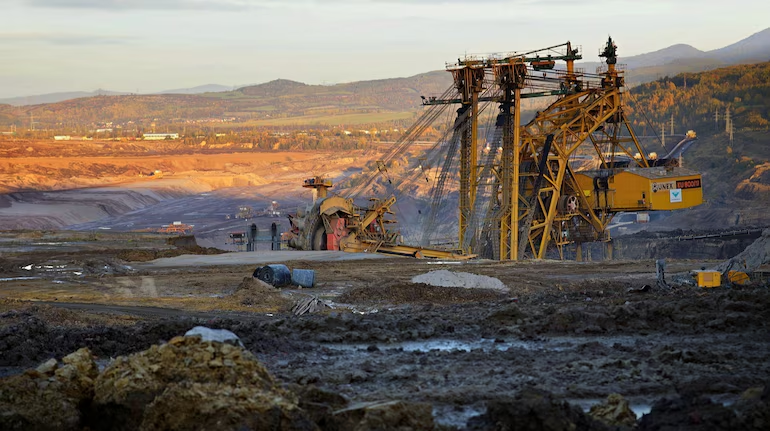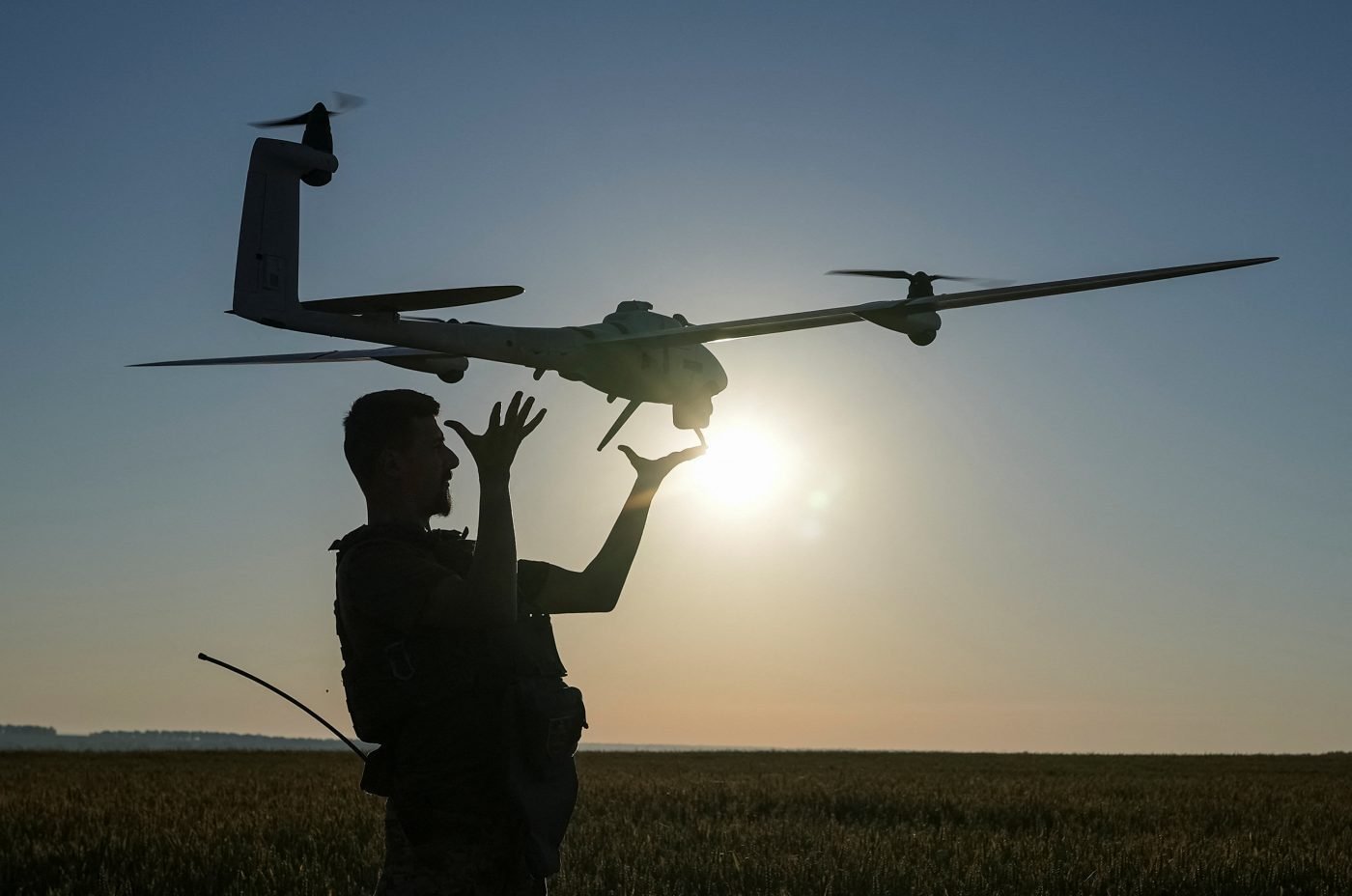European Centre for Strategic Studies and Policy (ECSAP)
On October 7, 2023, a surprise attack from Hamas-led militants in Gaza became the deadliest day in Israeli history. Israel’s ensuing war in Gaza has been the deadliest and most destructive Palestinians have ever endured. We look at the heavy human costs born by Israelis and Palestinians over the last two years.
Introduction
On October 7, 2023, Hamas and allied militants launched a surprise and massive assault from Gaza into southern Israel. That day has been described by Israeli officials and many observers as the deadliest in Israel’s history, with civilian massacres, abductions, and coordinated strikes across border communities.
Israel responded with full military operations in Gaza, air strikes, a ground invasion, and a blockade. The war that ensued has become one of the most devastating in modern Palestinian history, producing staggering levels of casualty, displacement, infrastructure destruction, and deep humanitarian crisis.
This essay examines:
- The immediate shock of October 7 and Israeli casualties.
- The Palestinian toll: deaths, injuries, displacement, infrastructure, health, and nutrition.
- Strategic and military dynamics over the two years.
- Political and diplomatic dimensions.
- Reconstruction, recovery, and governance challenges.
- Possible pathways forward and recommendations.
Through this lens, we see that the human costs have not just been enormous, but also structural, potentially altering the demography, politics, and social contract of Gaza and Israel.
1. The October 7 Shock: Israeli Human Costs
1.1 The Scale and Nature of the Attack
- On October 7, Hamas militants breached Israel’s Gaza border in dozens of infiltration points, launching rockets and paragliders, and penetrating border towns and kibbutzim.
- According to a medical study, nearly 1,200 Israelis and foreign nationals were killed that day, hundreds more injured, and many abducted.
- The attack involved coordinated massacres in communities like Be’eri, Kfar Aza, Alumim, Netiv HaAsara, among others, with homes burned, civilians shot, and hostages taken.
- The Supernova music festival near Re’im was struck, resulting in mass casualties among civilians.
1.2 Casualty Profile and Impact
- The attack’s civilian toll was unprecedented; many neighborhoods experienced brutality, executions, and mass killings.
- According to reports, over 3,400 people (civilians + security forces) were wounded in that one day.
- The abductions numbered about 251 hostages, including women, children, and the elderly. Some of them remain unaccounted for.
- Communities such as Kfar Aza lost 10% of their population; dozens of homes were destroyed or burned.
- The psychological shock was profound in southern Israel: entire communities traumatized, mass displacement to safer areas, pressures on medical systems, emergency mobilization.
Thus, October 7 was not a military raid but a large-scale socio-political trauma with enduring psychological, demographic, and security consequences for Israel.
2. The Palestinian Human Cost Over Two Years
From October 2023 through October 2025, Gaza has borne the brunt of the military campaign. The data are approaching nightmarish scales.
2.1 Death and Injury
- According to health authorities and multiple compilations, more than 67,000 Palestinians have been killed in Gaza during this period. The Guardian estimates 67,074 dead, 168,716 injured.
- Of those killed, a substantial share are reported to be civilians, including children. Over 20,000 children are counted among the dead. Many injured are suffering from life-altering wounds: limb loss, neurological damage, multi-trauma.
- The Costs of War project provides a breakdown of direct and indirect mortality, highlighting that deaths have also resulted from the collapse of healthcare, malnutrition, and lack of essential services.
2.2 Displacement and Shelter Crisis
- Nearly the entire population of Gaza (over 90%) has been displaced at least once by recurrent operations, home demolitions, and bombardment. Housing, markets, and civilian infrastructure have been pulverized: reports estimate tens of thousands of buildingsdamaged or destroyed. Many families now live in makeshift shelters, tents, UNRWA facilities, or abandoned schools, often without proper sanitation, electricity, or safety.
2.3 Health System Collapse & Nutrition Crisis
- At least 125 health facilities (hospitals, clinics) have been damaged, partially destroyed, or rendered nonfunctional.
- WHO and partner reports document that fewer than half of Gaza’s hospitals remain partially functional.
- A recent study reports that over 54,600 children under five are acutely malnourished; 16% of children aged 6 months to under five experience acute wasting, and ~12,800 are in severe wasting.
- Malnutrition-related deaths have indeed occurred; data report hundreds of deaths tied to starvation or insufficient maternal/child nutrition.
- The destruction of water, sanitation, and electricity systems further worsens disease spread (cholera, diarrheal diseases, etc.). Al Jazeera states that 89% of Gaza’s water and sanitation infrastructure has been damaged.
- Health workers and medical staff have also been casualties; more than 1,700 health and aid workers have died in Gaza.
2.4 Indirect Deaths and Secondary Causes
- Beyond direct conflict deaths, indirect mortality from malnutrition, interrupted chronic disease care (diabetics, dialysis, cancer), maternal mortality, and infectious disease outbreaks have augmented the toll. The Costs of Warreport emphasizes that effect.
- Some estimates suggest that hundreds to thousands more may have died from those secondary causes over two years.
2.5 Demographic Impact and Societal Trauma
- Life expectancy in Gaza reportedly dropped drastically in the first year of conflict (some studies suggest halving in certain zones).
- Social trauma is immense: many children have grown up amid bombardment, loss of schooling, displacement.
- Family separations, missing persons, psychological damage, and destruction of civic institutions carry lasting consequences beyond simple numbers.
Thus, Gaza has not just endured a war but a systemic collapse of systems—health, water, governance, and society.
3. Military & Strategic Dynamics
Understanding how the war evolved helps frame the human cost—and the constraints any post-war arrangement faces.
3.1 Phases of the Conflict
- Phase 1 (Oct–Dec 2023): Intense Israeli aerial bombardment, incursions, siege, and a full blockade. The goal: degrade Hamas command and tunnel networks, neutralize leaders.
- Phase 2 (2024): Deeper ground operations, repeated flare-ups, control of border zones, partial reoccupation, repeated humanitarian pauses.
- Phase 3 (2025): Prolonged conflict, slow stabilization of frontlines, deeper destruction, attempts at ceasefire diplomacy, and evolving international pressure.
3.2 Military Balance and Costs
- Israel deployed vast air, naval, and infantry resources, citing Hamas’s embedded military presence within civilian zones, tunnel warfare, and command concealment.
- Hamas and other militant groups adapted with underground infrastructure, small cell tactics, anti-tank missiles, and asymmetric warfare.
- The repeated cycles of escalation inflicted casualties on both sides, but Gaza’s vulnerabilities (densely populated, limited defense, battered infrastructure) made it overwhelmingly costly.
- The Economist maps highlight that Israeli strikes disproportionately concentrated in southern Gaza then northward — entire city blocks leveled.
3.3 Attrition, Stalemate, and External Pressure
- Over time, Israel sought to attrit Hamas’s capacity, but sustaining a full occupation proved politically costly and operationally complex.
- External pressures (U.S., UN, donor states) began pushing for pauses, hostage deals, and humanitarian corridors.
- Hamas, although weakened, retained leverage via hostages, internal resilience, and local support networks.
Thus, the conflict settled into a brutal equilibrium: Israel with military dominance but limited political options; Gaza devastated yet partially resisting; neither side able to fully extinguish the other by force.
4. Political, Diplomatic, and Legal Dimensions
4.1 Diplomatic Moves and Ceasefire Attempts
- Ceasefire proposals have circulated through Egypt, Qatar, the UN, and the U.S.
- In 2025, Israel and Hamas agreed to a “first phase” ceasefire/hostage exchange deal, under U.S. mediation.
- Critics note the deal is fragile, its implementation burdened with mistrust, and its future hinges on post-ceasefire governance, disarmament, and reconstruction.
4.2 Legal Accusations and War Crimes Claims
- NGOs and U.N. bodies have accused both sides of violations of international humanitarian law (IHL), including indiscriminate attacks, targeting civilians, obstruction of aid, and denial of basic necessities.
- Some U.N. investigators and human rights entities have characterized Israeli actions as amounting to genocide or crimes against humanity. Israel rejects those labels, citing Hamas’s embedding among civilians and the imperative of self-defense.
- The question of accountability remains fraught: evidence preservation, chain of custody, jurisdiction, and political will all pose significant obstacles.
4.3 Internal Politics: Israel and the Palestinians
- In Israel, the October 7 shock reshaped politics: call for security, reconfiguration of coalition priorities, debates over territorial control, and balancing democratic constraints with wartime decisions.
- Among Palestinians, Gaza’s devastation pressures the authority structures (Hamas, PA), undermines social legitimacy, and reshapes internal power dynamics.
- Internationally, the war refocused Middle East diplomacy, with regional actors (Egypt, Qatar, Turkey, UAE) positioning as mediators or strategic stakeholders.
5. Reconstruction, Recovery, and Governance Challenges
If and when the fighting subsides, Gaza faces an almost insurmountable task of rebuilding not just buildings, but statehood.
5.1 Financial & Logistical Scale
- The reconstruction cost is estimated in the tens of billions of dollars.
- Massive quantity of rubble, unexploded ordinance (UXO), damaged utilities, destroyed roads, and collapsed housing stock must be cleared and rebuilt.
- Ensuring aid accountability in fragile environments is complex—leakage, diversion, donor fatigue all pose risks.
5.2 Governance, Legitimacy & Institutional Capacity
- Which authority manages reconstruction? A technocratic interim government? The Palestinian Authority? A hybrid model?
- The interim authority must deliver services (water, electricity, health, education) credibly, or face legitimacy deficits.
- Anti-corruption, transparency, public participation, and civil society oversight are critical to avoid reinforcing predatory structures.
5.3 Security and Policing
- Post-conflict, Gaza must establish policing and internal security forces to maintain order and prevent small arms proliferation.
- Disarmament or containment of Hamas and other armed groups is politically and operationally risky but necessary to the stability of any reconstruction regime.
- Border security, smuggling prevention, and tunnel control must align with humanitarian and trade openness.
5.4 Socioeconomic Revival
- Stimulating job creation—especially in construction, services, small enterprise—is vital to reduce dependence on aid.
- Reviving agriculture, fisheries, and trade sectors will be necessary but will require demining, infrastructure, and market access.
- Reintegrating youth, supporting trauma recovery, education, and social cohesion projects will be essential to curb long-term instability.
6. Paths Forward & Policy Recommendations
Given the costs and fragilities, what pragmatic steps can Israel, Palestinians, and the international community take?
6.1 Stabilization First, Peace Later
- A lasting ceasefire must be regarded not as the endpoint but as a foundation for stabilization and reconstruction.
- The window is narrow: if reconstruction stalls, grievances and vacuum expand, risking relapse.
6.2 Phased Approach with Benchmarks
- Link reconstruction and aid disbursement to security, governance, and accountability benchmarks.
- Monitor compliance through third-party mechanisms, with clear consequences for defection.
6.3 Inclusive Governance
- The governing authority must include pragmatic Palestinian voices, civil society, and technocrats—not just external appointees.
- Ensure representation of displaced communities, women, and youth in rebuilding plans.
6.4 Protect Civilian Lives & Infrastructure
- Future operations must adhere to stricter IHL compliance: protection of civilians, avoiding collective punishment, preserving essential services.
- Establish humanitarian corridors in war time with well-protected mediators and monitors.
6.5 Accountability and Transitional Justice
- Preserve evidence now—mass graves, damaged infrastructure, victim testimonies—for future accountability.
- Consider local-level truth commissions, reparations programs, and memorialization to address trauma and grievances.
6.6 Long-Term International Commitment
- Reconstruction will require sustained donor commitment beyond emergency years.
- Multi-donor funds with transparent governance (e.g. a “Gaza Recovery Trust Fund”) may reduce leakage and provide continuity.
6.7 Regional Integration & Normalization Logic
- Rebuilding must connect Gaza to regional markets (ports, electricity grids, trade corridors) to avoid isolation.
- Leverage Gulf states, Egypt, Jordan, and international powers in infrastructural investments.
Conclusion
The October 7, 2023 attack recalibrated the Israeli-Palestinian conflict. The ensuing war has imposed devastating human costs on Gaza—tens of thousands killed or injured, near-total displacement, institutional collapse, and deep societal trauma. Israelis also suffered grievously on that fateful day—and continue to live with the threat of hostility and the burden of unresolved hostages.
Yet the war’s damage cannot be undone by arms alone. A durable path forward demands an integrated approach: a ceasefire that holds; humanitarian stabilisation; reconstruction under accountable governance; security architecture that protects civilians; and justice mechanisms to address grievances. Without these interlocking pieces, any respite may prove temporary.
If war was the starting point, then peace must be built—not declared.
The real test lies ahead: whether Israel, Palestine, and the global community can salvage recovery, de-escalate cycles of violence, and rebuild a viable life for Gaza’s population—and a just horizon for Israelis and Palestinians alike.

